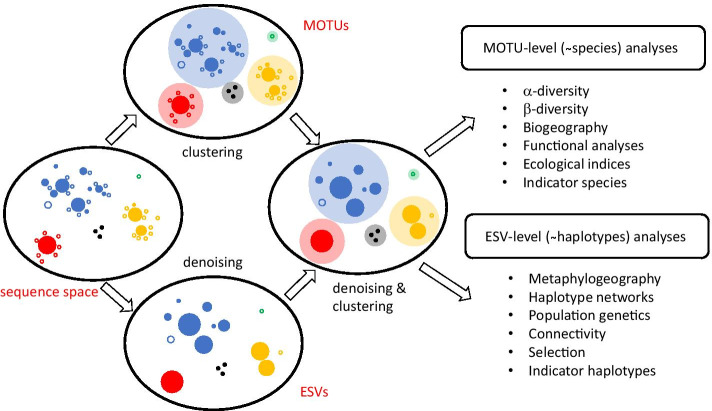Fig. 1.
Conceptual overview of the denoising and clustering processes. The oval on the left sketches a fragment of the sequence space with four biological species plus an artefact divergent sequence (denoted by colours). Correct sequences are indicated by filled circles and artefacts by empty circles, with indication of abundance (circle size). Denoising results in the detection of putatively correct sequences to which the reads of putatively incorrect sequences are merged (leading to a reduced dataset). The outcome of denoising should ideally approach the true haplotype composition of the samples. Clustering generates MOTUs without regard as to whether the grouped sequences are erroneous or not. This is usually accompanied by read pooling and keeping only one representative sequence per MOTU (leading to a reduced dataset). The outcome of clustering should ideally approach the species composition of the samples. Combining both processes results in a dataset that is reduced in size, comparable across studies, and amenable to analyses at the MOTU (species) and ESV (haplotype) levels. Note that errors likely persist in the final dataset both as artefact MOTUs and artefact ESVs within MOTUs, and carefully designed filters should be used to minimize them (abundance filtering, chimera filtering, numts removal)

